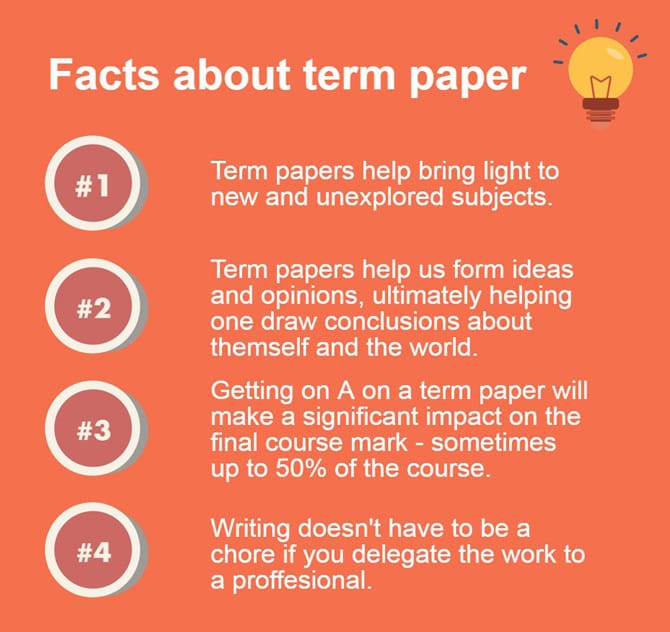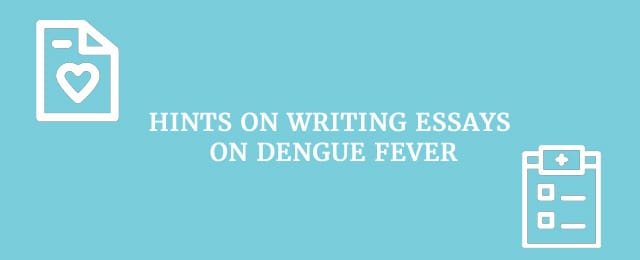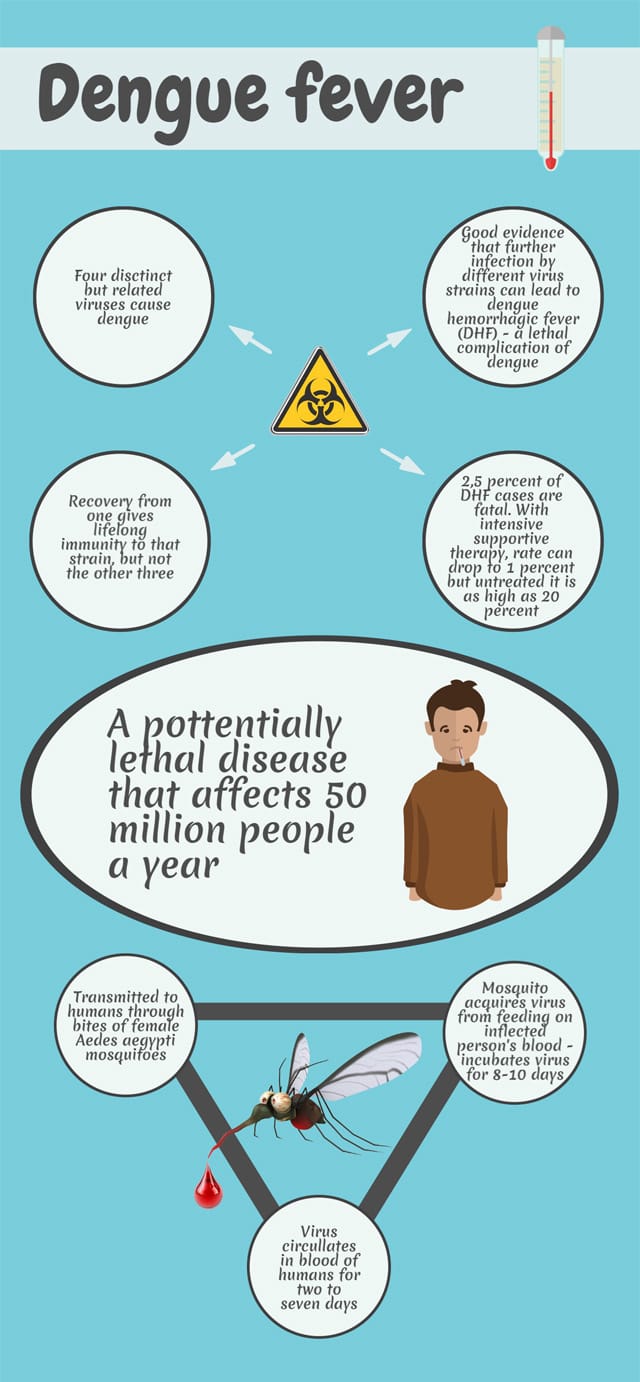
Writing a term paper is a big task; it is also something you are bound to run into in many of your university courses. Not only that, but college term papers will probably make up a huge portion of the final grade you get in your course. That is incredibly intimidating.
The bottom line is:
You need to have a solid understanding of how to write a college term paper that will get you the grade you want. But what is a term paper? Do you even know what is in a research paper? Let’s find out because this having a solid idea of what a term paper is will help you determine your approach to term paper writing.

What is a term paper?
A research paper is an assignment given by your professor, generally after a semester of work to determine your overall grasp of the course content and help you expand the knowledge base you have built.
In fact:
You can greatly increase your level of proficiency in the course and delve into the course content on a much deeper level. You will also sharpen your research, analytic, and writing skills, skills you will need as you move beyond university and start your career.
The topic assigned to you can be in any area of focus related to the course material you studied. There might also be times when you are allowed to choose your topic, or at least, pick a narrower topic from within a broader scope of content.
With this is mind, let’s take a look at some basic tips for how to write a college paper.

Basic tips for writing a research paper
As Frederick Taylor University points out, thereare nine steps you must take when writing a term paper. These include:
- Choose the broad subject area on which you wish to focus.
- Narrow down that broad subject areato a more specific topic.
- Determine the objective of your paper.
- Conduct a preliminary literature review and create a bibliography.
- Create a provisional outline of your paper.
- Read the literature and take notes as you do.
- Create a final outline for your paper.
- Write a rough draft of the paper.
- Proofread/edit and write a final draft for submission.

Lock Haven University also provides some fabulous and detailed guidelines of what you must include when writing a research paper. In short, these are:
- Research and investigation: This is where you hunt down the material you will use for your paper. Try to find material that is more difficult to find and that will give you a unique slant to your paper.
- Synthesis: Take the material and information you find and amalgamate it in such a way that relationships and patterns are evident.
- Organization: Give structure to the information you have uncovered.
- Analysis: Provide a solid analysis of the material you have uncovered and organized, presenting supporting evidence to back up your arguments.
- Clarification: Ensure that the research and information you are presenting is clear and easily understood by the reader.
- Examination: Indicate how the topic of your research fits into the broader context of the field, how it might have historical significance, or how it relates to alternate fields.
- Selection and distillation: Take a good look at the information you have and weed out anything that is not necessary until you only have the most relevant content for your paper.
- Choosing a point of view: Show how the evidence supports your arguments and research.
It is important to prepare yourself for writing a college paper throughout the semester — don’t just wait until the paper is assigned. You can do this by always attending class, paying attention during lectures, and taking good notes during class. Now, let’s expand on these basic tips.

How you prepare to write
Before you begin writing, you have to choose your topic. Even though your professor might assign you a general topic, there is a good chance you can choose your own or at least choose a narrow focus of the broader topic your professor assigns. When choosing your topic, do the following:
- Select a topic in which you are interested, one that gets you really excited!
- If you can’t figure out a narrowed down topic, then start with something broader and begin writing. You might find that a narrower topic reveals itself to you.
- If you need help or guidance when choosing a topic, you can talk with your professor. You can also share ideas with classmates until you choose one that works for you.
- When you settle on a topic, consider it in the form of a question or a problem that requires solving, which will help you focus your research and present your paper in an intriguing manner.
Your research needs to be conducted in a methodical manner and you need to refer to authoritative sources. When conducting your research, keep the following in mind:
- When starting your search for sources, check your library catalog, bibliographies in journals and professional papers, and sources suggested by your instructor.
- Start out by reading through some general sources that discuss your topic and then referring to the references listed in those sources.
- Use primary sources, as opposed to secondary sources. This means if a reference is made to a certain source, go to the source itself, rather than referencing the source that referenced the source.
- Great primary sources include books, journals, government publications, and other professional documents.
- Be sure to use the most recent sources first and work your way back in time.
When doing your research, it is best if you create systems for doing the following:
- Taking notes
- Keeping a bibliography
- Organizing material in order of most important to least important

Once you have done all of the above, you can then tackle how to write a term paper outline. When creating your outline, keeping the following in mind:
- Firmly establish your topic and state the reason for its significance.
- State why the research material is relevant.
- Establish your thesis statement.
- Determine how to plan the organization of your paper and create an outline.
The University of Wisconsin-Madison offers up some great information on how to prepare to write your term paper.
But:
Once you have all the preliminary research and organization completed, you can set out to do the most important part — the writing!
To write a well-organized paper, you must know how the proper term paper format. The format of a research paper is covered by Oregon State University, UCDavis, and for a great term paper example, Frederick Taylor University details how to write each part of a term paper with a term paper format sample.
Aside from a very creative title that clearly states what the paper will be about the parts of a termpaper are as follows:
- Introduction: Here, you will provide your thesis statement, your objective, and how you will approach the research and analysis you provide in your paper.
- Body: Here you will provide a detailed discussion of your research sources and analyze the information you have gathered. This will be achieved over the course of a few paragraphs.
- Conclusion: Here you will summarize the information and analysis you presented in the body of the paper and discuss your findings, conclusions, and further research on the topic.
- References: List all the references from which you gathered information using the referencing style requested by your professor. Refer to this MLA college research paper example, APA term paper format, or Chicago style guide for information on different styles of referencing.
Concordia University, Rice University, and the University of Alberta all provide excellent guidelines on writing a research paper.

Types of research papers
There are so many types of papers you can write and your choices depend on the courses you are taking. Whether you are in history, science, computer science, or psychology, or another field of study, you will very likely be required to write a term paper.
You are in luck!
To help you get a better idea of what to write, what follows are descriptions and examples of college term paper topics you might be required to write. You can use these as a benchmark so you can get a better feel for what you need to produce for your professor.
Let’s take a look…
Technology
Do you know the history of the internet? Did you know the United States government invented it for military use? However, these days everyone around the world has access to the Internet, providing people with the ability to stay connected, shop, work, and more.
When writing a research paper on the topic of the Internet for your technology course, you will be able to learn so much about the World Wide Web, including the inner workings of the vast network that keeps us all connected.
But beware!
The Internet is a very broad topic, one that you will need to narrow down if you plan to write about it for your technology paper. For this reason, here are some specific topics from which you can choose when you are selecting a topic about the Internet.

- Pathologic use of the Internet is a great topic. Millions of people feel they simply can’t live without the Internet. The absolute dependence so many people have on the Internet is a serious psychological issue that would make a great topic for your paper. As part of your paper, you can provide suggestions on how to prevent our youth from becoming addicted to the computer and the Internet.
- Internet ethics is another fabuloustopic for a research paper. There are many ethical issues on which you can focus because there is so much questionable or downright immoral content out there, such as pornography or websites that inciteracial and religious conflict.
- Software piracy and other forms of Internet crime is also a fabulous topic for a paper. You can focus on the various types of Internet crime and what is being done to deal with them. You can also offer suggestions for ways to improve regulations and fight Internet crime.
When it comes to writing about the Internet, there are many facets of the topic you can explore. The best idea is to come up with a topic that is unique and intriguing, something that hasn’t been explored to any great degree. The University of California-Irvine offers an extensive list of topics from which to choose.
Business

Business also has many different topics that are perfect for a paper. A marketing term paper is a great general subject area. Outsourcing is perhaps an old topic in the business world, but it has developed so much in recent years that there are many new ways for companies to outsource their work. You can explore the various ways to outsource and how businesses handle each of them.
What about strategy?
The exploration and explanation of different types of outsourcing in different fields of business is a broad topic. You can narrow this down by browsing through your textbooks, other types of books,articles, or the Internet to find a focus or particular question you can address in your paper.
You can focus on how companies outsource through freelancing websites, what accommodations companies need to make when it comes to outsourcing these days, or another relevant topic. Because outsourcing has evolved significantly with the introduction of the Internet and mobile technology, there are many focused topics to explore. Check out the University of Victoria for great examples of papers and topics.
Psychology

One of the biggest problems in psychology is the extent to which child abuse occurs. The abuse of a child often leads to one or more types of mental illness and psychological issues that can plague a child through to adulthood. Child abuse makes a very interesting and relevant topic in today’s society.
When writing about child abuse, always begin with an introduction to what child abuse is, but then you will want to narrow down your topic to something that has a unique focus. Some areas of focus you might want to consider include:
- Changes in the prevalence of child abuse over the last 100 years. For this, you can take a look at the statistical data on child abuse. Any government or other official website devoted to child abuse will contain all the latest and historical statistics on the problem. You can focus on this data and make a case for if and how child abuse has changed over time.
- The different types of child abuse. You can take an in-depth look at the various types of child abuse, how they are classified, and what signs are apparent when child abuse is happening. You can narrow your focus to one type of abuse, such emotional, which is perhaps more difficult to recognize.
- The prevention of child abuse. Many methods have been proposed and initiated to prevent child abuse. You can conduct an in-depth study into these methods, discuss what works and what doesn’t, and what other potential ideas for child abuse prevention exists. Your research might lead you to some ideas of your own, which can be presented in your paper.
Again, the key is to come up with an original topic. You just might ignite a flame of passion about the subject matter in your reader’s heart.Louden County Public Schools outlines more topics to consider.
Literature
Literature is another subject in which you might be required to write a term paper. In the case of literature, you can focus on one specific novel, perhaps a historical novel or a classic, and choose a narrow topic that relates to that story.

One fabulous example is Huckleberry Finn by Mark Twain. This is truly a classic that will not steer you wrong. In fact, you might be assigned this novel as a topic for a paper. If you have read the book and paid attention in class, you might already know what to focus on in your paper, but if you aren’t sure, then here are some ideas:
- The depths to which white society can sink. Huckleberry Finn comes from a low-class family. His father is a drunk and a ruffian and he frequently vanishes for months at a time. Huck is filthy and often homeless. How does this reflect the time in which the book was written and how is it relevant now?
- Child abuse and protection in relation to Huck and his father. How did society and the community fail to provide Huck with adequate protection from his father? You can relate this to the way in which the harsh adult reality can have an effect on child’s perception of the world and to how child protection has progressed since the time the book was written.
- Conduct a thorough review of societal values of the time. Huckcan consider a situation based on its own merits, rather than on what society thinks. This enables him to reach conclusions that are certainly correct, but that were not accepted by white society at the time. In particular, the ongoing inequality between white and black people should be addressed in terms of the novel and the time in which it is set.
- You can address the issues of racism and slavery as they are presented in Huckleberry Finn. Twain exposed the hypocrisy of slavery and adequately demonstrates how racism affects the oppressors as much as it does the oppressed. Focus on how this situation results in moral confusion, in which apparently “good” white people, such as Miss Watson,do not express concern about the injustice of slavery and do not seem phased by the cruelty that is apparent when Jim is separated from his family.
- Focus on the concepts of moral and intellectual education. Huck is an outcast of society and it is up to him to determine his own sense of morality. He has no formal education. He relies on his child’s intuition to distinguish between right and wrong and can do so without the prejudice of the white society of the south.
The moral and ethical issues presented in Huckleberry Finn are incredibly deep and diverse and still relevant in today’s society. You will find a rich wealth of information and topics related to this great novel and the Burma Education Fund offers many more literature term paper topics to consider.
History

History is such a broad topic that it can be incredibly difficult to narrow it down enough to find a topic for a research paper. You can begin by considering the type of history course in which you are enrolled. You will have a completely different focus if you are enrolled in an American History course than if you are studying the fall of the Roman Empire. Fortunately, history provides us with a wealth of dates, events, and personalities and these make great topics for term papers.
Let’s consider topics for an American history course. Some general topics on history of the United States include:
- A focus on your favorite period in American history. This might be the Civil War or World War II.
- A focus on your favorite president or the president you believe had the mosteffect on the development of the United Sates, either in a positive or negative way.
- A focus ona particular event that is significant inAmerican history and expand on how it affected the development of the country.
If you plan to focus on an American president, you can certainly choose from any of them. However, the following are particularly interesting as a focus for your paper:
- Abraham Lincoln
- Thomas Jefferson
- George Washington
- Woodrow Wilson
You can even compare and contrast two presidents. Other interesting American history paper topics include:
- The Bill of Rights and how it sowed the seeds of the American Constitution
- Thomas Jefferson and his slave Sally Hemming
- The causes and effects of the Monroe Doctrine
- The peculiarities of the formation of the Confederacy
- The Suffragette movement and its effects
- How the League of Nations was a dream that failed
- The Korean War and how it was a confrontation between two superior nations
Ultimately, you need to come up with a point in history, an event, or a person and narrow down your topic to one that gives you a unique take on American history and will provide the reader with information that will make them consider American history in a new light. Martini Hospital offers a list of other history topics you can explore.
Anthropology

Anthropology is a more research-oriented discipline, which can make writing a research paper more challenging. When you write your paper, there should be an element of research in it. This might be a theoretical study or an examination of a specific group of people. Either way, you will need to include some empirical data, as well as theory.
It is critical to decide which group will be the focus of your paper and there should be a considerable amount of information about them available. Since you will be conducting a detailed study, choosing a local group of people is ideal because you can then conduct interviews and gather first-hand accounts and information regarding the people and where they live. This could be a group of:
- Indigenous or First Nations people
- An immigrant group
- A prominent family
If you simply are not able to collect empirical field research, you should choose a topic for which there is ample information. You can find this information in your school library, journals, and on the Internet. Southern Nazarene University offers some great topic suggestions for cultural anthropology.
As you can see, there are many potential topics from which to choose when deciding on a topic for your paper. This sampling just scratches the surface of what you can do. Chances are you will need to write papers for more than one of your classes so be sure to check out the links above and do some serious research into potential topics.
If you need more guidance when writing your paper, you can check out this fabulous lecture given by a professor at Cambridge University.
It can be so overwhelming when you are expected to write a term paper, in part because you have to learn how to write it effectively and in part because you are snowed under with a lot of other work. If you feel you still need term paper help, don’t turn to free writing help or buying term papers online. If you see college term papers for sale, you never know what you will get and whether it will be full of plagiarism or have been sold to other students.
If you need help, the best thing is to have a term paper writer from a custom term paper writing service write a custom term paper that is 100%-free of plagiarism. The best paper writing services NEVER plagiarize! This level of custom term paper writing offered by a custom research paper writing service will allow you to submit a paper your professor will love and one that will get you a fabulous mark!


























































































































































































